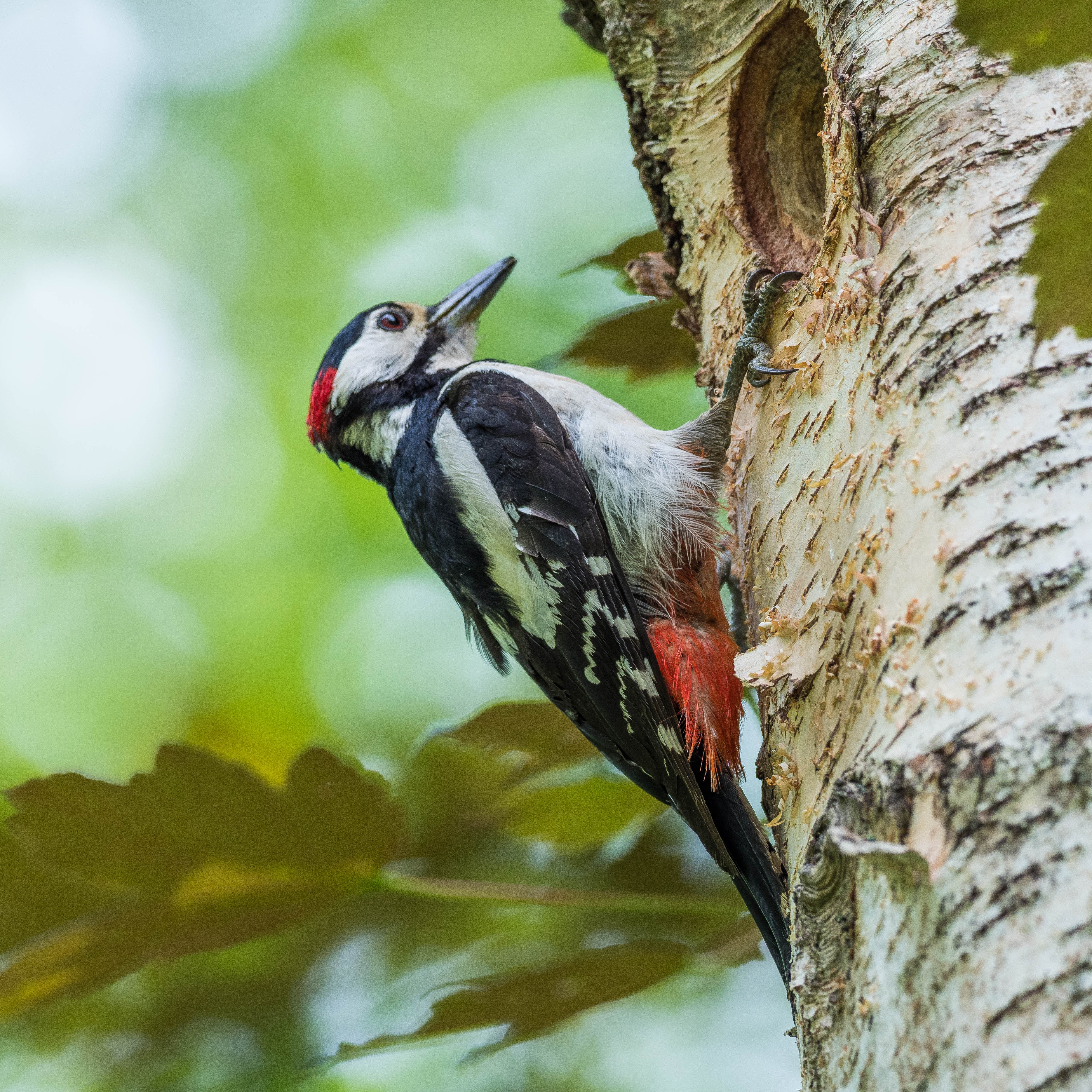Europe, known for its rich cultural heritage and historical landmarks, is also home to a diverse array of wildlife. From the dense forests of Scandinavia to the expansive wetlands of Eastern Europe and the rugged mountain ranges of the Alps, the continent showcases a remarkable variety of ecosystems and species. In this article, we will explore the captivating wildlife of Europe, highlighting its unique characteristics, conservation challenges, and the importance of preserving its natural heritage.
Table of Contents
Majestic Mammals: The European Icons

Credit: Charles J. Sharp, CC BY-SA 4.0 https://creativecommons.org/licenses/by-sa/4.0, via Wikimedia Commons
Europe boasts several iconic mammal species that have captured the imagination of people worldwide. One such species is the European brown bear in Finland, Sweden, and Romania. These impressive creatures are known for their strength and elusive nature. With its striking appearance and exceptional hunting skills, the Eurasian lynx is another remarkable predator in European forests. The European bison, the continent’s largest land mammal, has made a great comeback from near extinction and is now thriving in protected areas.
Avian Wonders: Birds of Europe

Credit: Bengt Nyman from Vaxholm, Sweden, CC BY 2.0 https://creativecommons.org/licenses/by/2.0, via Wikimedia Commons
Europe is a haven for birdwatchers, offering various avian species. The European robin, with its bright orange-red breast, is a familiar sight in gardens and parks. The regal golden eagle soars high above the mountains of Scotland and Spain, while the colorful kingfisher darts along rivers and lakes, showcasing its vibrant plumage. Wetland areas attract many migratory birds, including storks, herons, and geese, creating a spectacle for nature enthusiasts.
Reptiles and Amphibians: Life in the Wild
Europe is home to a diverse range of reptiles and amphibians, adapted to various habitats across the continent. The European adder, a venomous snake, can be found in grasslands and woodlands. The agile wall lizard, with its ability to climb walls and bask in the sun, is a common sight in Mediterranean regions. Amphibians such as the common frog, agile frog, and European fire-bellied toad thrive in wetlands and play a vital role in maintaining ecosystem balance.
Marine Marvels: Life Beneath the Waves
Europe’s coastal regions are teeming with marine life, offering a glimpse into the wonders of the underwater world. The Mediterranean Sea is home to an abundance of marine species, including the colorful parrotfish, octopuses, and seahorses. The cold waters of the North Atlantic host magnificent creatures like whales, dolphins, and seals. Seabirds, such as puffins and gannets, grace the cliffs and islands along the coasts, adding to the coastal biodiversity of Europe.
Unique Invertebrates: The Small Wonders
Europe is also home to a fascinating array of invertebrates, including butterflies, beetles, and insects. The swallowtail butterfly, with its distinctive wing pattern, dances through meadows and gardens. Ladybugs, known for their vibrant colors and role in controlling aphid populations, are widely recognized and cherished. Bees and other pollinators play a crucial role in European ecosystems, ensuring the reproduction of plants and the production of honey.
Conservation Challenges in Europe
Despite the abundance of wildlife in Europe, many species face significant conservation challenges. Habitat loss, climate change, pollution, and human activities threaten their survival. The destruction of natural habitats due to urbanization, intensive agriculture, and deforestation reduces available resources and disrupts ecological balance. Pollution, including air and water pollution, affects both terrestrial and aquatic species. Climate change brings new challenges, such as shifting habitats and altered migration patterns.
Conservation Efforts: Protecting Europe’s Natural Heritage
Conservation efforts in Europe aim to protect and restore the continent’s wildlife and habitats. The establishment of national parks, nature reserves, and protected areas provides safe havens for biodiversity. Conservation organizations collaborate with governments, researchers, and local communities to implement strategies for species recovery and habitat restoration. Public awareness campaigns raise consciousness about the importance of preserving Europe’s natural heritage, encouraging responsible practices and sustainable development.
Rewilding: Restoring Balance
Rewilding initiatives are gaining momentum in Europe, aiming to restore natural processes and reintroduce keystone species that have been lost from the landscape. These initiatives involve the reintroduction of species like beavers, wolves, and European bison, which play vital roles in shaping ecosystems. By allowing natural processes to occur and reducing human intervention, rewilding projects promote biodiversity, improve ecosystem resilience, and provide opportunities for ecological restoration on a larger scale.
Citizen Science: Engaging the Public
Citizen science programs actively involve the public in monitoring and conserving European wildlife. Individuals contribute to scientific research by recording wildlife sightings, collecting data, and participating in surveys. These initiatives not only gather valuable information but also foster a sense of stewardship and connection with nature. Citizen science projects are instrumental in expanding the knowledge base and promoting community involvement in wildlife conservation.
Sustainable Tourism: Appreciating Europe’s Wildlife
Sustainable tourism plays a vital role in European wildlife conservation. Responsible travelers can experience and appreciate Europe’s wildlife while minimizing their impact on the environment. Choosing eco-friendly accommodations, following designated trails, and respecting wildlife habitats and regulations contribute to the preservation of Europe’s natural heritage. By supporting local communities and businesses that prioritize conservation, tourists can actively contribute to wildlife protection.
FAQs on Wildlife of Europe
Asia
Asia
Africa
Africa
Europe
Europe
North America
North America
South America
South America
Australia
Australia
Antarctica
Antarctica
